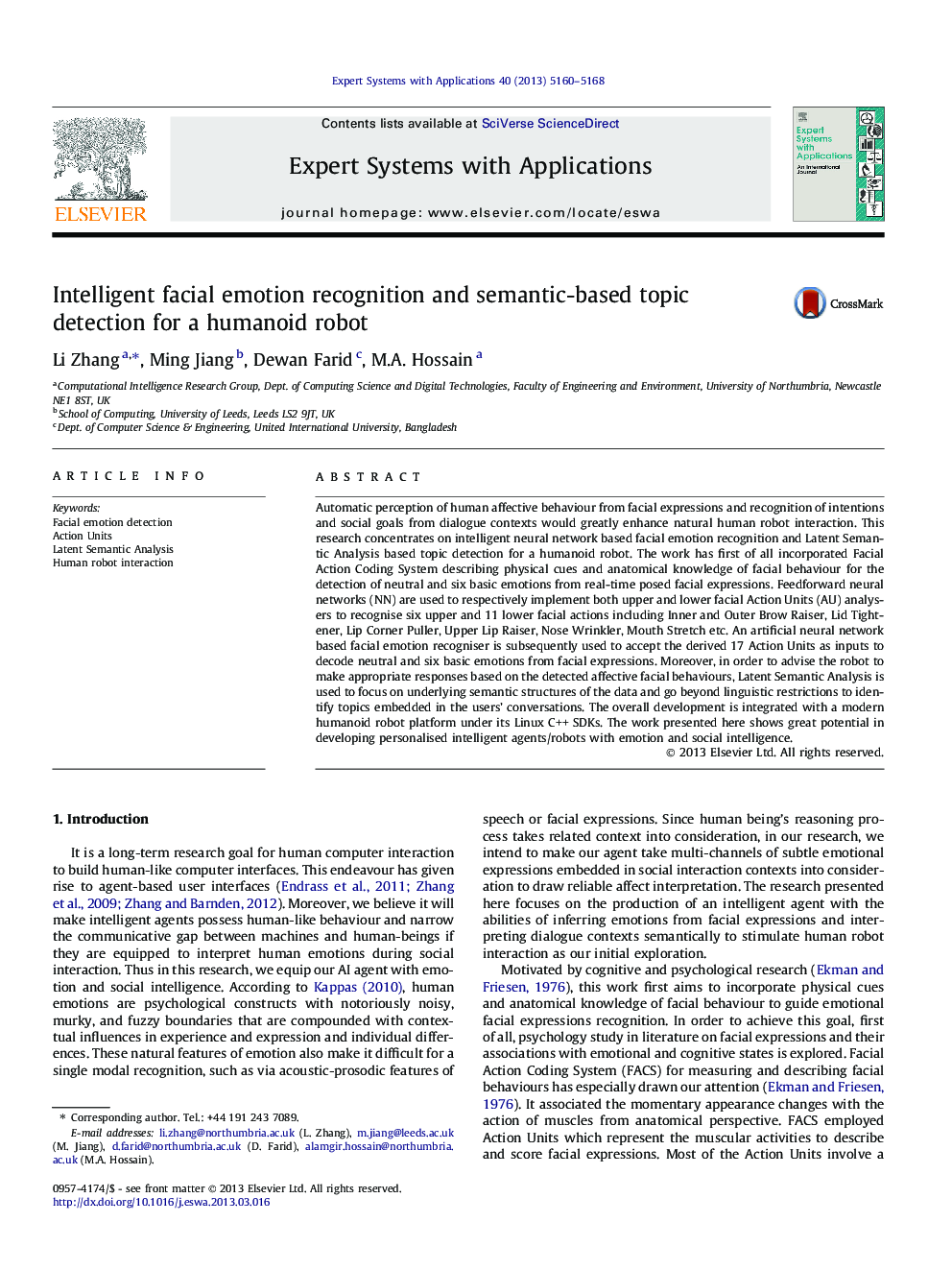| Article ID | Journal | Published Year | Pages | File Type |
|---|---|---|---|---|
| 383778 | Expert Systems with Applications | 2013 | 9 Pages |
•The work employs anatomical truth of facial behaviour to recognise seven emotions.•17 Action Units are recognised using upper and lower action analysers.•A facial emotion recogniser uses the derived actions to further decode emotions.•Latent Semantic Analysis is used to identify topics beyond linguistic constraints.•The overall development is integrated with a modern humanoid robot platform.
Automatic perception of human affective behaviour from facial expressions and recognition of intentions and social goals from dialogue contexts would greatly enhance natural human robot interaction. This research concentrates on intelligent neural network based facial emotion recognition and Latent Semantic Analysis based topic detection for a humanoid robot. The work has first of all incorporated Facial Action Coding System describing physical cues and anatomical knowledge of facial behaviour for the detection of neutral and six basic emotions from real-time posed facial expressions. Feedforward neural networks (NN) are used to respectively implement both upper and lower facial Action Units (AU) analysers to recognise six upper and 11 lower facial actions including Inner and Outer Brow Raiser, Lid Tightener, Lip Corner Puller, Upper Lip Raiser, Nose Wrinkler, Mouth Stretch etc. An artificial neural network based facial emotion recogniser is subsequently used to accept the derived 17 Action Units as inputs to decode neutral and six basic emotions from facial expressions. Moreover, in order to advise the robot to make appropriate responses based on the detected affective facial behaviours, Latent Semantic Analysis is used to focus on underlying semantic structures of the data and go beyond linguistic restrictions to identify topics embedded in the users’ conversations. The overall development is integrated with a modern humanoid robot platform under its Linux C++ SDKs. The work presented here shows great potential in developing personalised intelligent agents/robots with emotion and social intelligence.
